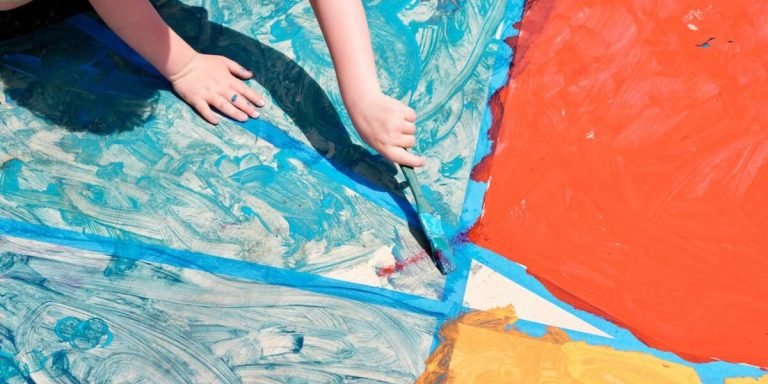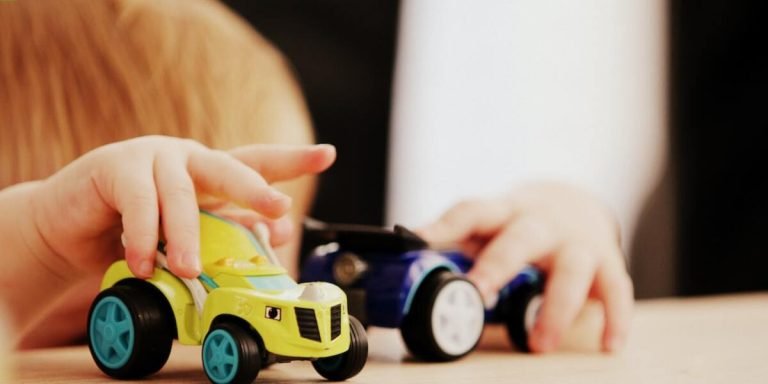DIY Workshop: Fostering Creativity and Learning in Childhood Education
Childhood education is a vital stage in a child’s life. It establishes the groundwork for their developmental journey, molding cognitive skills and fostering creativity through various activities like DIY workshops. These do-it-yourself sessions are not just about fun; they serve as an effective approach to activity-based learning – stimulating young minds while teaching them important lessons.
A good DIY workshop can transform traditional classroom dynamics by providing hands-on experience that meshes with theoretical knowledge seamlessly. This integrated approach encourages children to explore their surroundings, ask questions and find creative solutions–fundamental skills needed throughout one’s academic career and beyond. The benefits of such interactive pedagogy extend far beyond rote memorization or dry lectures; it bridges gaps between theory and application enhancing overall understanding.
Did you know?
Did you know? According to a study by Michigan State University, children who experienced hands-on DIY or craft activities were far more likely to develop creative and innovative thinking skills that led them into careers such as inventors, scientists and entrepreneurs.
Exploring the Benefits of DIY Workshops for Active Learning
Engaging learners actively in their educational journey has transformed the learning environment, introducing an array of benefits. One such interactive teaching method is DIY workshops – a hands-on approach encouraging activity-based learning and fostering creativity among children. They provide students with unique opportunities to apply theoretical knowledge practically.
In this digital age, especially post-2023, integrating technology into these innovative classroom practices streamlines education immensely.
DIY tech workshops are no longer optional add-ons but integral parts of contemporary pedagogical techniques that foster active participation from students while enhancing their cognitive skills. The key lies in interweaving technological elements seamlessly within creative tasks for maximum learner engagement and better comprehension of concepts taught at school or home platforms.
Moreover, these custom-made workshop environments also nurture critical thinking – a prime requisite skillset required during problem-solving scenarios presented by real-world challenges today’s generations face increasingly often due to our rapidly evolving tech-savvy world culture shift after 2023 situated primarily on virtual interfaces.
The Role of Hands-On Projects in Enhancing Cognitive Skills
In the realm of childhood education, integrating DIY workshops into a child’s learning experience has proven to be invaluable. Why? Because they promote activity-based learning and contribute significantly towards enhancing cognitive skills.
Firstly, remember that hands-on projects are inherent in every DIY workshop. These tasks allow kids to directly interact with materials and processes., This direct interaction not only piques curiosity but sparks self-initiated exploration as well- key components for effective activity-based learning.
Through physical engagement during these workshops, children better understand concepts introduced in traditional classroom settings. They scrutinize theories using tangible examples which boost their comprehension skills remarkably. The keyword here is ‘experience’, undoubtedly an excellent teacher!
Threading through the practicality avenue further enlightens us on how these hands-on activities foster critical thinking – one crucial cognitive ability cultivated via this mode of skill enhancement! As children navigate information retrieval or problem-solving endeavours within such scenarios, they learn novel strategies without even realising it.
Moreover, research constantly shows positive correlations between hands-on projects from a DIY workshop and improvements in memory retention capabilities amongst youngsters (very much required amidst our recent digital boom). When we engage multiple senses while participating physically , brains work harder resulting in stronger neural connections strengthening memory storage mechanisms subsequently over time.
Furthermore,the beauty behind engaging students via active task involvement lies hidden beneath realms of creativity expansion offered by such exercises: devise plans; make decisions independently regarding material choices; brainstorm solutions – all opportunities for exercising creative muscles!
Boosting Retention Through Experiential Educational Techniques
In our current 2023 educational landscape, parents and educators are constantly seeking innovative approaches to enhance learning experiences for youngsters. Among the diverse methods available, DIY workshops have emerged as a notable tool in facilitating activity-based learning.
To commence with, “DIY workshop” is no longer just a buzzword but rather has transmuted into an indispensable part of integrating technology and education. It’s all about actively involving children within an immersive environment where they can physically engage with their surroundings while simultaneously absorbing constant information flowing around them – thereby boosting retention rates significantly!
The practicality that envelops these DIY workshops transcends traditional textbook-centric paradigms of teaching. Imagine your child constructing robot models or participating in coding challenges instead of merely reading about concepts from books! This shift towards hands-on exposure not only opens horizons for real-world applications but also nurtures problem-solving abilities at early ages.
Furthermore, these interactive sessions infuse fun factor into regular lessons by breaking the monotony! A science experiment on photosynthesis will always be more exciting than passive absorption through mundane textbooks – won’t it? Enriching such memorable learning moments underpins why experiential educational techniques hold merit when we talk about enhanced knowledge retention among young learners.
But how does this tie-in to ‘activity based-learning’? The entire premise bases itself upon active participation wherein students learn via engaging activities—further fostering creativity along-side curiosity—integral attributes required for stimulating intellectual growth during formative years.
Key Elements to Design an Effective Activity-Based DIY Workshop
Designing an effective activity-based DIY workshop for childhood education requires a meticulous approach, integrating several critical elements. The primary goal is to merge conventional teaching methods with the revolutionary advancements of technology, fostering a more engaging and interactive learning environment.
The first facet to consider while designing such workshops is identifying clear instructional objectives. These targets provide both educator and student with defined goals that align well with your learning strategies capitalizing on advanced tech integration in early stage schooling. Once these aims have been identified and understood, educators can then move forward crafting unique activities tailored around them using tools like VR/AR (virtual reality/augmented reality), dynamic 3D modeling software or gamification platforms.
Moreover, curating resources relevant to support each task designed plays another significant role in facilitating Activity Based Learning (ABL). This could range from digital content libraries that provide multimedia options for visual learners through educational apps or websites offering subject-specific interactive exercises enhancing student engagement due their hands-on nature.
Lastly but significantly important aspect lies in developing assessment criteria aligned closely alongside planned tasks objectives befitting of current times as we continue leveraging upon technological mediums within our classrooms all across 2023.
Incorporating Diverse Materials for Comprehensive Skill Development
When it comes to designing an effective activity-based DIY workshop, incorporating diverse materials is a crucial factor. Not only will this enrich the learning experience for children, but also foster comprehensive skill development.
Consider the following steps to include various resources in your educational footprint:
1. Exploration of Gadgets: In 2023, technology sits at the heart of childhood education and serves as an essential part of any successful diy workshop. Devices like tablets or smartboards introduce kids to digital literacy early on, paving way for future success.
2. Craft Materials Usage: Items such as clay or craft paper aren’t simply used anymore just to sculpt objects or create artwork; they’ve stepped into acting out concrete concepts abstractly thus bolstering creative problem-solving skills.
3. Use Everyday Objects: Simple items around us often have hidden educational purposes that can be effectively utilized in these workshops – think measuring units with cooking spoons!
4.Pedagogical Games Integration: Board games promoting strategic thinking (like chess) could be mixed with modern video game-inspired lessons boosting mental agility while keeping engagement high.
5.Science Kits Experimentation : Utilizing science kits gets hands-on interaction providing tangible understanding about different phenomena usually not possible within typical classroom settings .
In all ways mentioned above there’s one common thread binding them –Activity Based Learning . By employing diverse mediums we’re allowing each child their unique road towards knowledge acquisition rather than forcing them down pre-determined paths which may not resonate personally making learning unproductive ultimately .
Structuring Sessions for Optimal Learner Engagement and Participation
Structuring interactive and engaging sessions is crucial when planning an effective Activity-Based DIY workshop. A well-structured session not only captures the interest of young learners but also enhances their participation, ensuring a more fruitful learning experience.
To start with, identify clear objectives for each session that align with larger educational goals. Objectives should revolve around specific skills or knowledge areas related to technology integration in education.
Next focus on creating a conducive environment which encourages children’s engagement. Encourage active participation from youngsters by integrating hands-on activities within your DIY workshop plan. Creating tangible projects allows them to interact directly with technological tools such as 3D printers, robotic kits or coding platforms, enhancing their understanding while piquing curiosity.
Integrating game-based learning techniques is another brilliant strategy towards increased learner engagement during these workshops . Games designed around topics like coding principles or electronics components can make complex concepts fun and simpler to grasp for kids.
Always remember – Inclusivity holds paramount importance; it ensures all participants benefit equally from the workshop regardless of individual differences in grasping speed or prior exposure levels.
Continuous feedback and interaction are significant facets too! Endeavour into discussions about what they learned after every activity completion; this facilitates reinforcement of newly learnt concepts besides giving you insights into potential improvement areas.
Incorporate digital collaboration tools where students can share ideas & progress virtually anytime translating into seamless continuity & peer-to-peer knowledge sharing thus promoting collective intelligence growth amidst co-participants!
Assessing the Impact of Activity-Based Learning through DIY Workshops
Activity-based learning, especially through DIY workshops, has emerged as a fundamental strategy in the realm of modern education. It is an effective method that can invigorate traditional teaching and inspire creative thinking while enhancing technical skills among students. Now more than ever, with technology permeating every aspect of our lives in 2023, its integration into these hands-on activities becomes highly critical.
DIY workshops provide not only theoretical knowledge but also practical experience – serving as an ideal platform to learn about new technologies and tools. The application-centric approach empowers learners by actively engaging them in their individual learning journeys rather than being passive recipients of information.
Assessing the impact of such programs goes beyond merely examining academic performance or grades – it’s about gauging student engagement levels and understanding how effectively they are applying learned concepts practically. These workshops offer significant insights about cognitive development across varying age groups – shaping pedagogical methodologies for delivering nuanced content relevantly.
Through well-structured & strategically designed interactive sessions at DIY Workshops, teachers aim not just to impart instruction but nurture innovative thinkers ready to build tomorrow’s world using contemporary technology solutions today.
Measuring Skill Acquisition and Application Post-Workshop
When it comes to activity-based learning, DIY workshops have proven to be an enlightening method that engages youngsters in a fun and interactive manner. It’s not just about crafting something new; these workshops foster the development of numerous essential skills like problem-solving, creativity, critical thinking and more.
Post-workshop assessments are crucial because they determine whether or not students are genuinely benefiting from this hands-on approach towards education. So how does one measure skill acquisition and application post-workshop?
To start with, you can observe your child’s engagement during the workshop – using photos or videos for reference if necessary. Check on their active participation levels throughout: were they keenly attentive? Did they show enthusiasm while taking part in tasks?
An involved student is likely absorbing valuable knowledge which will come into play later on.
Next up is practical understanding- This can be evaluated by seeing how well children implement learned strategies when faced with similar scenarios independently at home or school after attending a diy workshop. Watch out for instances where young ones apply concepts taken from classroom settings outside those bounds successfully—this signifies real-time uptake of learnings.
Gathering Feedback: Strategies for Continuous Improvement in Workshop Formats
With the ongoing evolution of technology and its integration in education, DIY workshops have become a quintessential part of activity-based learning for children. They offer practical skills and real-world applications that conventional classroom methods may overlook. But how can one ascertain their impact?
Gathering feedback plays an integral role.
One strategy to adapt is incorporating direct interaction with students during or post completion of the workshop. This allows educators to gauge student involvement, assess understanding levels, and note down any prevailing gaps between expectations versus actual outcomes involving project tasks pertaining to technological models, software handling etc within these “diy workshop (s)”.
A second approach could be through online forums where participants are urged to share personal experiences about what they learnt via images or videos demonstrating their new-found skill(s) acquiesced from integrating technology into learning procedures – this resonates particularly well with digital native learners in 2023!
In addition, surveys consisting questions about hands-on session content relevance vis-à-vis theoretical topics covered at school can provide valuable insights regarding knowledge assimilation capabilities when brought face-to-face with practically-oriented activities like coding games using Python language or creating mobile app prototypes.
Conclusion
All in all, a DIY workshop is more than just a fun activity; it’s an opportunity to foster creativity and learning within your young ones. It not only enhances their creative thinking but also builds confidence and encourages independent problem-solving skills. The hands-on approach makes lessons memorable as children learn by doing, thereby improving retention.
So why wait? Take full advantage of the wealth of information available on our website that gives you numerous ideas and guidance for conducting your own workshops at home or school settings! We have countless resources aimed at providing support to both parents and educators alike when navigating childhood education.
Happy exploring!







